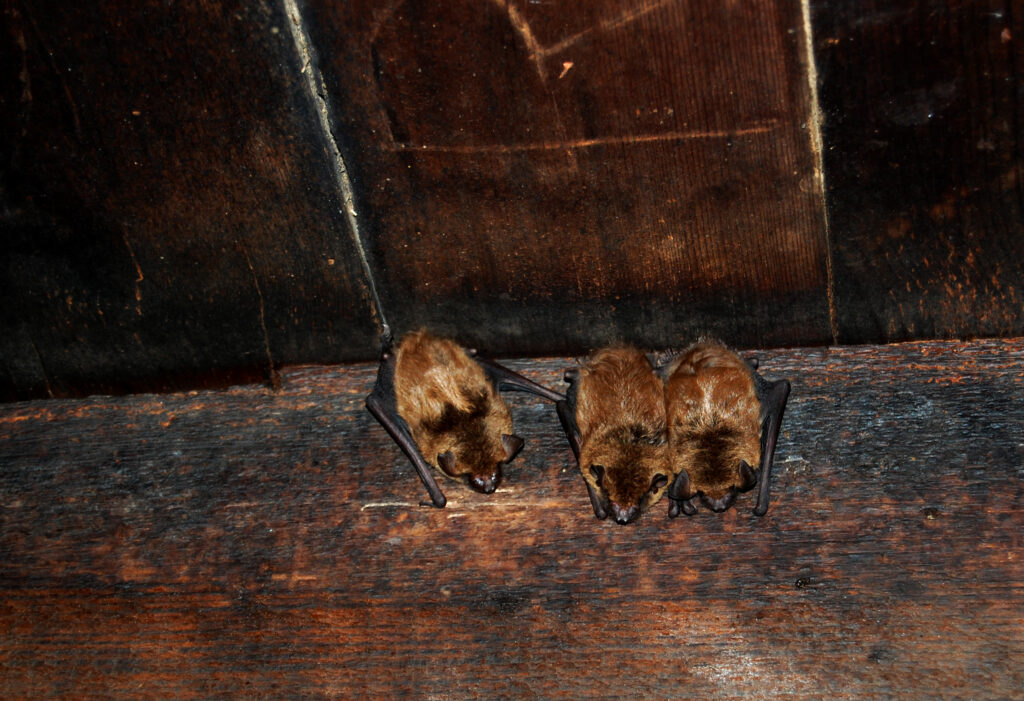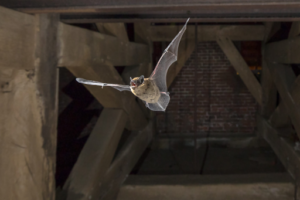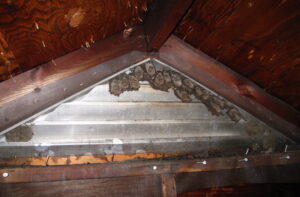Unwanted Guests: A Comprehensive Guide to Humane Bat Removal

While bats play a vital role in our ecosystems, having them take up residence in your home can be a cause for concern. These nocturnal creatures can pose health risks, cause property damage, and create a general nuisance. If you find yourself in this situation, it’s essential to approach bat removal with caution and ethical consideration. In this comprehensive guide, we’ll explore the humane methods of bat removal, addressing the common questions and concerns surrounding this process.
Understanding the Importance of Bats

Bats, often misunderstood and misrepresented creatures, play an indispensable role in maintaining the ecological balance of our planet. Despite their ominous reputation in popular culture, these nocturnal mammals serve crucial functions in various ecosystems, making their conservation vital for biodiversity and human well-being.
One of the most significant contributions of bats lies in their role as pollinators. Over 500 species of plants depend on bats for pollination, including economically important crops like bananas, mangoes, and agave. Unlike bees and butterflies, bats are capable of pollinating at night, ensuring continuous pollination even after sunset. This unique ability aids in the reproduction of numerous plant species and contributes to the stability of ecosystems and agricultural systems.
Beyond pollination, bats are voracious insect predators. A single bat can consume hundreds of insects in just one hour, making them effective controllers of pest populations. This natural pest control service provided by bats reduces the need for chemical pesticides, thereby promoting sustainable agriculture and reducing environmental contamination. Farmers worldwide benefit from the presence of bats in their fields, as these flying mammals help protect crops from destructive insects.
Importance of Bats

Bats are integral to the health of ecosystems through their role in seed dispersal. As bats feed on fruits, they inadvertently transport seeds to new locations, facilitating the regeneration and expansion of plant populations. This dispersal mechanism enhances biodiversity and promotes the growth of diverse plant communities. In regions where bats are abundant, their absence can disrupt the natural dispersal of seeds, leading to ecosystem degradation and loss of plant diversity.
Furthermore, bats contribute to the nutrient cycling process by depositing guano, or bat droppings, in their roosting sites. Guano is a rich source of nitrogen, phosphorus, and potassium, essential nutrients for plant growth. In caves and forests where bats roost, guano enriches the soil, promoting the growth of vegetation and supporting the entire ecosystem. The presence of bats thus enhances soil fertility and ecosystem productivity.
Despite their ecological significance, bats face numerous threats that jeopardize their populations worldwide. Habitat loss, pesticide use, climate change, and the spread of diseases like white-nose syndrome pose serious challenges to bat conservation efforts. Additionally, negative attitudes and misconceptions about bats contribute to human-induced harm, including persecution and habitat destruction.
Understanding the importance of bats is essential for safeguarding both biodiversity and human interests. By recognizing their roles as pollinators, insect controllers, seed dispersers, and contributors to nutrient cycling, we can appreciate the ecological services they provide. Conservation initiatives aimed at protecting bat habitats, mitigating threats, and raising public awareness are crucial for ensuring the continued survival of these remarkable creatures and the ecosystems they inhabit.
Why is it important to remove bats humanely?
Aside from the ethical considerations, bats are protected by law in many regions, and improper or inhumane removal methods can result in legal consequences. Furthermore, inhumane practices can lead to the unnecessary suffering of these creatures and potentially exacerbate the problem by causing them to scatter and seek refuge elsewhere.
Identifying Bat Entry Points

Detecting and sealing bat entry points is crucial for preventing these nocturnal creatures from entering human structures and causing potential harm. Bats often seek shelter in attics, walls, and other secluded areas of buildings, making it imperative to identify and block their access points effectively.
The first step in identifying bat entry points is conducting a thorough inspection of the exterior and interior of the building. Look for any gaps, cracks, or openings that bats could use to gain entry. Common entry points include gaps around rooflines, vents, chimneys, windows, and eaves. Bats can squeeze through incredibly small openings, so even tiny gaps should not be overlooked.
During the inspection, pay close attention to areas with signs of bat activity, such as guano (bat droppings), urine stains, or rub marks left by their oily fur. These indicators can help pinpoint the locations where bats are entering and exiting the building. Additionally, listen for chirping or scratching noises, especially at dusk when bats become active.
Once potential entry points are identified, it’s essential to seal them off properly to prevent re-entry. Use materials like caulk, foam sealant, wire mesh, or hardware cloth to fill gaps and cover openings. Ensure that all seals are tight and secure, as bats can easily dislodge loose barriers.
However, it’s crucial to exercise caution when sealing entry points to avoid trapping bats inside the building. Before sealing off any openings, confirm that bats have exited for the night using exclusion devices or by observing their departure at dusk. Installing one-way bat valves or nets over entry points allows bats to leave but prevents them from re-entering.
In cases where bats have already established roosts inside the building, it’s best to seek assistance from wildlife professionals experienced in bat removal and exclusion. Attempting to remove bats without proper training and equipment can be dangerous and may result in legal consequences, as bats are protected by laws in many regions.
By promptly identifying and sealing bat entry points, homeowners can prevent bat infestations and minimize the risks associated with bat-human interactions. Taking proactive measures to exclude bats from buildings promotes both human safety and bat conservation efforts.
How can you tell if you have a bat infestation?
Visible signs of a bat infestation include the presence of bat droppings (guano), staining around entry points, and the distinct odor associated with their urine and guano. You may also hear scratching or squeaking noises coming from your attic or walls, particularly at dusk or dawn when bats are most active.
Humane Bat Exclusion Methods
Once you’ve identified the entry points, it’s time to implement humane exclusion methods. The goal is to allow the bats to leave their roost but prevent them from re-entering once they’ve departed. This process typically involves installing one-way exclusion devices, such as netting or cones, over the entry points. These devices allow the bats to exit but prevent them from returning.
It’s important to note that bat exclusion should only be performed during specific times of the year when there are no flightless young bats present. In most regions, this window typically falls between late August and mid-May. Excluding bats during the maternity season can result in the inhumane separation of mothers from their pups, leading to their eventual starvation and death.
What should you do if you find a bat inside your home?
If you encounter a bat inside your living space, it’s essential to remain calm and avoid direct contact. Bats can carry diseases, and their bites, while uncommon, can be dangerous. Open doors and windows to allow the bat to exit on its own, or carefully capture it using a container and a piece of cardboard or a towel. Once contained, release the bat outside at night when it’s active.
Sealing Entry Points and Cleanup

Once the bats have been successfully excluded, the next step is to permanently seal the entry points to prevent future infestations. This can be done using caulk, foam sealants, or other appropriate materials, ensuring a tight seal around the openings.
After sealing the entry points, it’s crucial to address the cleanup process. Bat guano can harbor dangerous pathogens, including histoplasmosis, a respiratory disease caused by a fungus that grows in bat droppings. Professional cleanup services are recommended to ensure the safe and thorough removal of guano and other contaminated materials.
Preventing Future Bat Infestations
While bat removal can be a challenging process, taking preventative measures can help avoid future infestations. Regular inspections of your home or building can identify potential entry points before bats have a chance to move in. Sealing any cracks, gaps, or openings larger than half an inch can deter bats from gaining access.
Additionally, maintaining a well-lit exterior and trimming back overhanging branches or vegetation can make your property less appealing to bats, as they prefer dark, secluded areas for roosting.
Conclusion
Bat and rat removal is a delicate process that requires patience, expertise, and ethical consideration. By following the guidelines outlined in this guide, you can successfully and humanely address a bat infestation while minimizing the risk of harm to these important creatures. Remember, bats play a vital role in our ecosystems, and it’s our responsibility to coexist with them in a respectful and sustainable manner. If you encounter a bat problem, seek professional assistance and prioritize humane exclusion methods to ensure a successful and responsible resolution.










